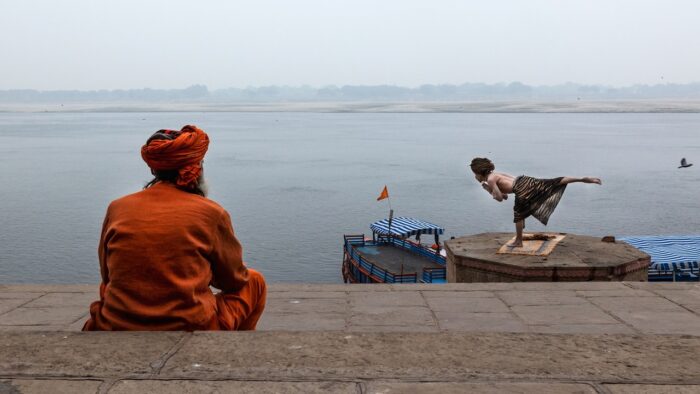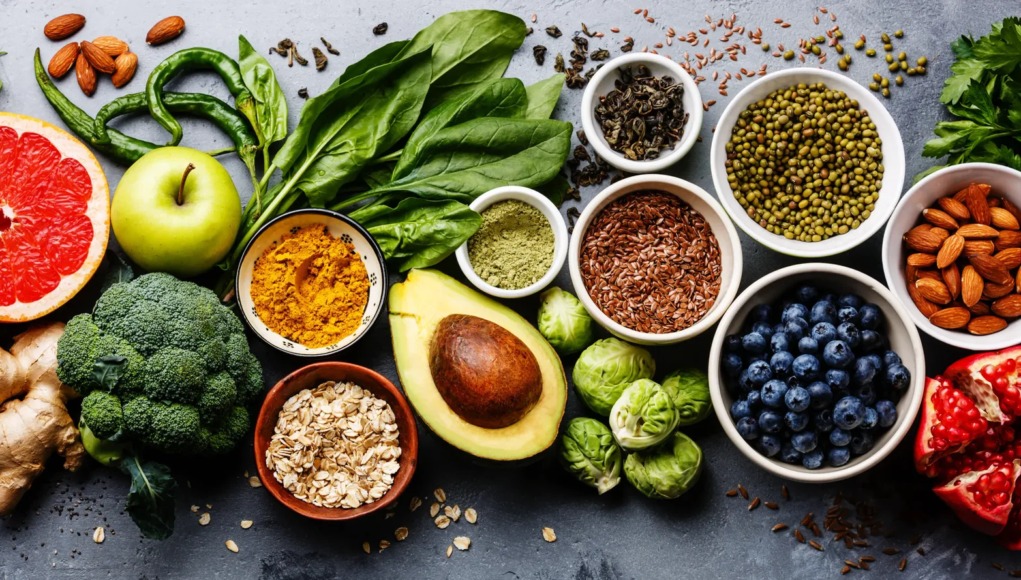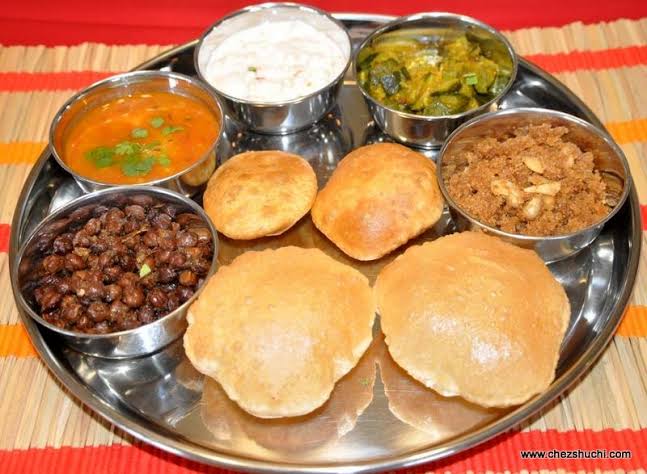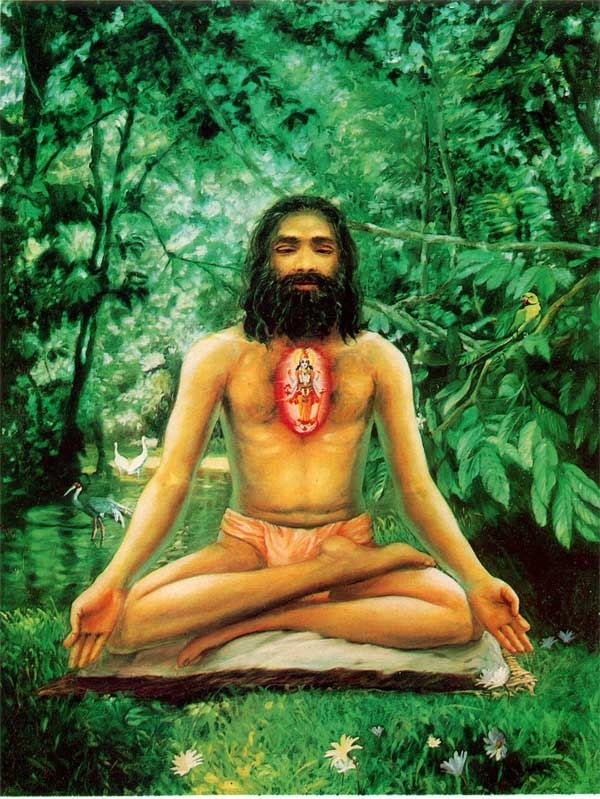(Practice Of Mitāhāra And Sātvika Diet According To Haṭhayoga Pradīpikā And Śrīmad Bhagavadgītā)
Abstract
The samādhi is one of the eight limbs of Patanjali’s yogasūtra[1]. In the very first aphorism, Patanjali explains the word yoga, where he claims that yoga is nothing but samādhi, the root yujsamādhau[2] gives the word yoga which is nothing but getting rid of all types of cittavr̥tti[3]. The great Nagojibhatta[4] in his ṭīkā viz., ‘vr̥tti’ explains the importance of cittabhūmi also in the very first aphorism “athayogānuśāsanam[5]”. He explains that the cittabhūmi will be affected by three gunas viz. satva, rajas and tamas. That is how the chittabhumi will be changed into different stages like kṣiptaṁ, mūḍhaṁ, vikṣiptaṁ, ekāgraṁ and niruddhaṁ. The last cittabhūmi which is called niruddhaṁ, is called thoughtlessness. The thoughtless stage or niruddhaṁ stage is called by different names depending on its characteristics viz., savitarka, nirvitarka etc. In the first chapter of Patanjali’s yogasūtra, author claims that asaṁprajñāta samādhi is the ultimate one, if a sādhaka is able to get rid of all the thoughts including saṁskāra by practicing “neti neti” (this isn’t, this isn’t)[6] concept; that is called nirbīja samādhi or asaṁprajñāta samādhi[7] and that is the ultimate stage.
So, the concept of samādhi is very clear – ultimate state of meditation, where there is no cittavr̥tti is samādhi. In order to achieve that, many techniques have been explained in yogic texts. Sometimes an achiever (sādhaka) can slip away from the path of samādhi, due to distorted, muffled mind. So, certainly controlling mind[8] plays the major role. The mind is always controlled by trigunas viz., satva, rajas and tamas. Even though the trigunas are default in every living being, sometimes our food habit can trigger them. “How these trigunas are triggered by the food, which has been consumed – is the research area in this article. As an answer to that, the haṭhayoga speaks about mitāhāra for yogis, “susnigdha madhurāhāraścaturthāṁśavivarjitaḥ bhujyate śivasaṁprītyai mitāhāraḥ sa ucyate”[9] as well as śrīmad bhagavadgītā also makes a comment on ahāra, “āyuḥ satvabalārogyasukhaprītivivardhanāḥ rasyāḥ snigdhāḥ sthirāḥ hr̥dyāḥ āhārāḥ sātvikapriyāḥ”[10]. Both the ślokas explain the sātvika food and its effect on the mind of sādhaka. Of course the guṇās will be triggered, and depending on the āhāra, the mind will receive the thoughts and mind will be completely taken over by gunas, which has been explained in bhagavadgītā, “caṁcalaṁ hi manaḥ kr̥ṣṇa pramāthi balavaddr̥ḍham tasyāhaṁ nigrahaṁ manye vāyoriva suduṣkaram”[11]. Nobody can overcome this, unless achieving the complete detachment or vairāgya.
Hence, the diet that we eat plays a major role in achieving the ultimatum of yoga, which is samādhi. Control over food habits can certainly elevate us to the heights of samādhi.
Yoga
The word yoga has been derived from the root yuj-samādhau, the ghañ suffix will be added and the word will be generated. The direct meaning is dhyānam according to kośās[12], is samādhānam (calmness). It is also one of the synonyms given in yogasūtra[13]. Yoga is of two types; saṁprajñāta yoga and asaṁprajñāta yoga. Yoga is considered as an attribute of cittam (mind). The cittam has five bhūmis, namely kṣiptam, mūḍham, vikṣiptam, ekāgram and niruddham. The rajoguṇa boosts up the kṣiptam (the fickle mind), which will be seen in demons. The tamoguṇa triggers the mūḍham (the drowsy, absent mindedness), especially seen in rākṣasās. The vikṣiptam (once in a while, the fickle mind gets a saturation stage) appears in demigods. Hence, the first two bhūmis can’t be considered yoga; the third one also can’t be considered even a door towards yoga, because that will also take place occasionally. The ekāgram mindset takes place when there will be satvaguṇa triggered up. In this scenario, mind will be focused on a particular subject, analogy of tailadhārā[14] to be remembered here. Here in this state, the rajoguṇa and tamoguṇa waves will be completely shattered and that is called saṁprajñāta yoga. In this state only saṁskārās will remain[15]. Here saṁskārā doesn’t mean previous birth[16] saṁskārā, but asaṁprajñāta saṁskārā; at this point, netineti (this isn’t, this isn’t) path to be followed to attain asaṁprajñāta or nirbīja[17] samādhi. Not even satvaguṇa will remain but only svarūpa – the pure consciousness will remain. That is why “yatra yatra mano yāti tatra tatra samādhayaḥ[18]” is said in the scripts, practicing an inquiry into the distinction between the seen and the seer will take place[19].
Mitāhāra and sātvika diet
(Figure 1: Credit: Unsplash – Sātvika Diet)
Before explaining the effects of food on the mind, we should know what is mind. The mind is explained very typically in every script. Mano hi dvividhaṁ proktam śuddhaṁ caaśuddhameva ca, aśuddhaṁ kāmasaṁkalpaṁ śuddhaṁ kāmavivarjitam[20]. Mind is of two types – pure and impure. The impure mind; where there is desire, emotions etc., we can see the reference in Upanishads viz., kāmaḥ saṅkalpo vicikitsā śraddhā aśraddhā dhr̥tiradhr̥tirhrīrdhīrbhīrityetatsarvaṁ mana eva[21]. If these attributes are absolutely nil, that is called pure mind, controlled mind. “Mana eva manuṣyāṇāṁ kāraṇaṁ baṁdha mokṣayoḥ, baṁdhāya viṣayāsaktam muktyai nirviṣayaṁ smr̥tam”[22]; the mind is the major reason to be bound to the worldly things as well as that will be the reason to attain mokṣa. The subjection of mind will bind and introvert mind will release the knots to liberation. The connection between ātman, buddhi, mind, indriya and subjects is explained in kathopanishad very well. “Ātmānaṁ rathinaṁ viddhi, śarīraṁ rathameva tu, buddhiṁ tu sārathiṁ viddhi, manaḥ pragrahameva ca, indriyāṇi hayānyāhurviṣayāṁsteṣu gocarān, ātmendriyamanoyuktaṁ bhoktetyāhurmanīṣiṇaḥ”[23]; the ātman is the charioteer, body is the chariot, buddhi is the driver and the manas is reins of the horses, the senses are called horses. The indriyas are quite interested in the subjects, so certainly reins will move towards the same. If the reins are controlled by the driver, which is buddhi then the horses, indriyas will be controlled. So, body, chariot will be in a proper condition and the charioteer, atman can reach the destination, liberation. In this case, how to control the mind? How the mind will be spoilt? One of the reasons will be food practice, if there is no control on taste, mind moves in a wrong path and atman doesn’t reach the destination.
The food system for a yogi is very important. Mitāhāra and sātvika āhāra is highly recommended for a yogi in haṭhayoga[24] as well as in gītā[25] to achieve samādhi (here onwards the word yoga will be called as samādhi). Overeating is prohibited for a yogi in the very beginning chapter of haṭhayoga[26], it is clearly mentioned that, atyāhāra or overeating is the very first one to shun, out of six major factors which prevent yoga. It is very well known among scholars that, there are five yamās and five niyamās according to patanjalai[27] but for a change there are ten rules in each yama and niyama according to haṭhayoga[28]. The mitāhāra is one of the ten yamās, haṭhayoga says non-violence, truth, non-stealing, continence, forgiveness, endurance, compassion, humility, moderate diet and cleanliness are the ten yamās[29]. So per haṭhayoga mitāhāra is the most important beginning step to practice yoga. The explanation of siddhāsana [30] focuses much on mitāhāra or moderate diet as the basis of self-control because it brings balance to the mind and the body. A siddha or practitioner should perform mitāhāra as a major step to achieve āsana.
So, the discussion point arises, what is mitāhāra? The food which harms one’s metabolism is to be avoided and fresh, sweet and pleasant food to be consumed, half of the stomach to be filled with āhāra, one fourth of the stomach to be filled with water and rest should be left free[31]; certainly, stomach should not be overloaded. Mitāhāra[32] consumption to be well supported by sātvika food and a practitioner should cultivate the attitude that, he is taking care of his body merely for its maintenance, by that his consciousness (śiva) can continue the process of spiritual evolution.
(Figure 2: Credit: Chezsuchi.com – Rajasic Diet)
The mitāhāra concept is explained in various yogopaniṣads also. The muktikopaniṣad has collected 108 upanishads; around 15 of them are completely related to yoga, so they are called yogipanishads. The triśikhi brāhmaṇopaniṣad says there are ten yamās – one of which is mitāhāra[33]. The dhyānabindūpaniṣad explains the mitāhāra; the foods like spicy, salty, and sour to be left completely and practicing milk as a major food[34]. Yājñavalkya and āditya conversation which is mentioned in maṇḍalabrāhmaṇopaniṣad also talks about āhāra. The upanishad actually accepts only four yamās, “śītoṣṇāhāranidrāvijayaḥ” is the first yama in the upanishad. If a person wants to attain samādhi, he needs to get mastery over śīta– uṣṇa, which means forbearance to be practiced. Always the mind moves towards tasty things, so the food practice is to be controlled, the food to be consumed if at all that is required. But, the food is not to be enjoyed, by that the desire of food will become intense[35]. The varāhopaniṣad and śāṇḍilyopaniṣad also mention mitāhāra as one of the ten yamās[36]. Yogatatvopaniṣad says that, there are twenty limbs for yoga. The upanishad has considered laghvahara as the major step in yama, the food which is very light to get digested is called laghvāhāra[37]. In this way many yogopaniṣads have mentioned the importance of mitāhāra or disciplined diet, and they too have strictly recommended the mitāhāra to a yogi.
Haṭhayoga also guides on what kind of food is to be avoided[38]. The list of prohibited foods are as follows; bitter, sour, pungent, salty, heating, green vegetables (apart from accepted ones), sour gruel, oil, sesame, mustard, alcohol, fish, flesh food, curd, buttermilk, horse gram, Chinese date (genus ziziphus), oil cakes, asafoetida (ferulaassa-foetida) and garlic. So, the yogi’s food should be very simple, any food item which shoots acidity and overheats the system must not be eaten. Note specially, the intoxicating food viz., alcohol is to be avoided strictly. Alcohol consumption kills the cells of liver and brain, which do not reproduce themselves unlike other cells of the body. Especially the aphrodisiac foods like asafoetida, garlic, local masalas (basil, cardamom, celery seeds, cinnamon, clove, coriander, fennel etc.) cause the sexual pleasures in the body and those hormones will be produced more; as the result, mind may wander towards pleasure seeking fantasies. Meat eating is completely prohibited in the smr̥tīs also, one who eats meat, he will be eaten in the next birth, that’s why māṁsa word is given according to manusmr̥ti and that’s how eating meat is prohibited[39]. The food which is reheated after it has gone cold would cause indigestion, dry food which has completely no oil and water substances also would create some digestive disorders, excess of salt and sour in the food will generate acidity in the body and different concentrated vegetables are suggested to not be cooked together (kadaśanam) else the digestive system might go upset. So, these kinds of wrong practices should be avoided or less the rāṇa (energy) will be focused much on digestion and not be involved in meditation[40].
(Figure 3: Credit: TimesOfIndia – Tamasic Diet)
After explaining which food is not to be consumed, the suggested food practices to a yogi are given in the later verses. The most relevant foods are as follows; good grains, wheat, rice, barley, milk, ghee, honey, dry ginger, paṭola (snake gourd or trichosanthes cucumerina), five vegetable (the leafy vegetables like spinach; balasaka, kalasaka, patolapatraka, vastraka and himalochika[41]), green gram and pure water. These foods will supply the very essential carbohydrates, vitamins etc. to the body and they stop any imbalance in digestion, as well as they make sure that the whole body is functioning well. So, the body will be maintained, well-nourished and balanced. As a result a yogi can completely get involved in his practice of meditation. The most important idea of the food is that, it should nourish the dhātūs[42] of one’s body. In āyurveda, there is a detailed study of each of this food[43]. Yava contains sweet rasa, it increases the body strength, mainly it is an anti-diuretic and decreases excessive fat[44]. Wheat or godhūma contains sweet rasa it is very pleasant; it mainly increases the body strength and nourishes it well[45]. This is how every food affects the body as well as the mind.
Sometimes consuming too much milk can create mucus problem, as well as excess ghee will cause fat in the body, so overall suitable food is recommended for a yogi. Depending on the metabolism of an individual, food is suggested. Sometimes even the best of suggested food might create certain ill health to the body. So yogi might have to experiment for a while to find a suitable food structure, which will be helpful and supportive to him.
This is how the haṭhayoga recommends the mitāhāra to a sādhaka or yogi. The yogi is eligible to practice prāṇāyāma, only after having mastery over the food system. If the sātvika diet isn’t followed it is highly impossible to have concentration and prāṇaśakti will be wasted in maintaining the body. So, it is of utmost importance that a yogi is free of any digestive disorders.
The holy gītā has given the best thoughts about sātvika, rājasika and tāmasika food. The food which promotes longevity, health, happiness, satisfaction and strength, as well as ones which are juicy, succulent, nourishing and pleasing, are called sātvika food[46]. So, the vegetarian food is beneficial for attaining the qualities of good thoughts that are conducive for spiritual health. The same idea is accepted by many great souls. “Vegetarianism is a greater progress. From the greater clearness of head and quicker apprehension motivated him to become a vegetarian. Flesh eating is an unprovoked murder[47].” “It is necessary to correct the error that vegetarianism has made us weak in mind, or passive or inert in action. I do not regard flesh food as necessary at any stage[48]”. The holy gītā continues to explain rājasika āhāra; the food which will generate pain in the body, agitation and disease is called so. The bitter oriented food, excess of salt and sour in the food, very hot and pungent food, dry food where there is no water substances and very spicy foods are listed as rājasika food[49]. Tāmasika food also is explained in the holy gītā; stale food, tasteless, putrid, polluted, leftover and impure food is called so[50]. Overall idea is this, health and hygiene is very important to achieve anything in this human birth. The food that we consume will certainly effect our body and bad food results in ill health, as the result it affects the mind. If the mind is not proper then how can we achieve focus? Hence food habit is the very basic and essential thing in the path of meditation. The haṭhayoga says that śivasaṁprītyai bhujyate, on the other hand the holy gītā also says that ahaṁ vaiśvānaro bhūtvā. Here in gītā, the ātman who resides in every living being will become the fire viz., vaiśvānara and will digest the food. The annaṁ is food or soma (bhojyaṁ) and the ātman in the form of vaiśvānara is the eater (bhoktā)[51]. The food is categorized into four types; bhakṣya (the act of chewing takes place) is like rice[52], bhojyaṁ (no teeth will be involved in this action) is like pāyasaṁ[53], lehyaṁ (licking) is like sugar[54] and coṣyaṁ (with the help of the teeth and facial muscles, the essence will be squeezed and left out will be thrown) is like sugarcane[55]. All these types of foods will be digested by vaiśvānara agni or ātman himself.
There would be a question that if at all a yogi doesn’t consume any food and continues his sādhana, what will happen? Chāndogya upaniṣad says that, without consuming food, smaraṇaśakti will be destroyed. State of starvation effects memory recall. The father asks his son śvetaketu to practice fasting for fifteen days, the son does as father guided. After fifteen days of practice, śvetaketu could not recollect a single verse, hymns from any vedās [56] that he had studied in gurukula. Hence, the food, which is consumed, would play a major role on one’s mind.
Samadhi
Probably, there is no exact translation in English for the word samādhi. For understanding purpose let us take thoughtlessness as samadhi. Aṣṭāṅga yoga of Patanjali is quite famous compared to any other sampradaya, related to yoga. Aṣṭāṅga yoga is nothing but eight fold yoga, yama, niyama, āsana, prāṇāyāma, pratyāhāra, dhyāna, dhāraṇā and samādhi. Certainly, the eight steps to be climbed up in an order, but not the meditation in the very beginning. Apart from practicing five yamas and five niyamas, no practitioner can go for āsana. Āsanas are there to maintain the healthy body. Here in this section, we can see sātvika diet according to haṭhayoga; without maintaining a healthy body, it is difficult to practice asana itself. After achieving āsana siddhi, the meditation or prāṇāyāma is suggested by every yogic text[57]. Achieving the mastery on breathing can be considered as meditation. After that, three antaraṅga limbs are suggested; dhāraṇā, dhyāna and samādhi[58]. It is quite difficult to show each one of them separately because they will be taking place one after another in very close succession. Also some of the yogopaniṣads have tried their level best to explain them separately; of course Patanjali has given aphorisms for each one of them. The amr̥tanādopaniṣad explains that there are only six aṅgās (limbs) in yoga, pratyāhāra, dhyāna, prāṇāyāma, dhāraṇā, tarka and samādhi. The definition of dhāraṇā is given in this way that, “manaḥ saṅkalpaṁ dhyātvā saṁkṣipyātmani buddhimā, dhārayitvā tathā ātmānaṁ dhāraṇā parikīrtitā”[59]; a practitioner should not allow any thoughts to disturb the mind and he needs to completely focus on atman, the absolute consciousness that is called dhāraṇā. Samādhi, “samaṁ manyeta yaṁ labdhvā sa samādhiḥ prakīrtitah”[60]; the yogi should consider self as ātman and vice versa, he should treat that the world and the Brahman are in equilibrium; because, the world which is a continual effect of the origin, which is Brahman. The same thing is explained in the Upanishads also, “yathā somyaikena mr̥tpiṇḍena sarvaṁ mr̥ṇmayaṁ vijñātaṁ syādvācāraṁbhaṇaṁ vikāro mr̥ttiketyeva satyam”[61].
(Figure 4: Credit: Shlokam – State of Samadhi)
Patanjali also has given his definition about these three in yogasūtram. Dhāraṇā, deśabandhaścittasya dhāraṇā; the steadiness of mind on any place like nābhicakra, tip of the nose, sun god etc. is called dhāraṇā. Nagoji Bhatta says in his vr̥tti that, “hr̥tpuṇḍarīke nābhyāṁ vā mūrdhni parvatamastake, evamādipradeśeṣu dhāraṇā cittabandhanam”; achieving focused mind on any particular subject is called dhāraṇā. Dhyāna, tatra pratyayaikatānatā dhyānam; the cittavr̥tti flows on, where dhāraṇā has taken place, there won’t be any disturbance in that process, so it is called pratyaya ekatānatā. Samādhi; “tadevārthamātranirbhāsaṁ svarūpaśūnyamiva samādhiḥ”. The complete process is explained with an example: A sādhaka, after practicing all five limbs, now at the stage of antaraṅga; here we need to remember about his cittabhūmi, absolutely he is not having any issues with kṣiptam, mūḍham and vikṣiptam. Once he starts the dhāraṇā on a particular thing (maybe iṣṭa devatā), easily ekāgratā will get set and the mind will be focused completely, which is called dhyāna. Slowly, mind stops receiving vrittis, which means, niruddha state will get unfolded. Once mind completely stops the thought process, asaṁprajñāta samādhi will take place.
The pañcakośa viveka concept from taittirīya upanishad also can be referred over here to explain the samādhi. There are five kośās or imaginary sheaths or layers for everyone. The very first one is called annamayakośa, which is built by the food; the last one is called ānandamayakośa. So a sādhaka should maintain his body only to reach the last kośa. He needs to consume a sātvika diet and move towards prāṇaśakti; after having controlled that, mind to be controlled. Controlling the mind is very difficult. Once he gets control over the mind, the vijñāna or intellect will be getting unfolded; only the ‘existence’ will be there. Finally the ānandamayakośa will disclose the existence of the sākṣī or ātman. So, the thin layer between the ānandamayakośa and the ātman to be torn up by practicing neti concept. That is called liberation or realization according to vedanta. In this complete process we can see prāṇamayakośa onwards only focused mindset and in vijñānamayakośa stage we can experience mere thoughtless mind, because mind is already controlled, so no point of cittavr̥ttīs. Of course the thoughtless mind is called niruddha (mind does not have any thoughts) by yoga texts (saṁprajñāta samādhi) and yet again the saṁskāra also to be burnt in jñānāgni [62], there we find the enlightenment (nirbīja samādhi).
Conclusion
Samādhi is a state of mind, but it also depends on our practices. Postures will help us to continue in a position for long time and breathing practice will make the prāṇaśakti proper, later all other things will follow. Even if the asana is related to physical body it also helps to practice samādhi. In the same way, it is important to understand that good food practices play a major role in the path of Samadhi – yogopaniṣat, haṭhayoga and gītā have indeed focused on discipline of food habits too.
References
- Pg 26, Krishnadas Sanskrit series 199, hathayogapradeepika, with Hari Hindi commentary, by Pandit Hariprasad Tripathi, Chawkhamba Krishnadas Academy, Varanasi. ISBN 9788121802016, Oriental publisher and distributers. Chapter 1, shloka 58.
- Ch 1, sutra 1, pg 2; ch 1, sutra 2, pg 4; ch 1, sutra 51, pg 57, The Kashi Sanskrit series 83, Yogasutram by Maharsi Patanjali, with six commentaries, 1. Rajamartanda by Bhojaraja 2. Pradipika by Bhava Ganesha, 3. Vritti by Nagoji Bhatta, 4. Maniprabha by Ramanandayati, 5. Chandrika by Anantadeva, 6. Yogasudhakara by Sadasivendra Saraswati. Edited with notes by Nyayacharyakavyateertha Pandit Dhundhiraj Sastri, principal, Nityanand Veda Vidyalaya, Benares. Chaukhambha Sanskrit Samsthan publishers and distributors, edition, reprint 2009.
- Ch 2, sutra 29, pg 91, The Kashi Sanskrit series 83, Yogasutram by Maharsi Patanjali, with six commentaries, 1. Rajamartanda by Bhojaraja 2. Pradipika by Bhava Ganesha, 3. Vritti by Nagoji Bhatta, 4. Maniprabha by Ramanandayati, 5. Chandrika by Anantadeva, 6. Yogasudhakara by Sadasivendrasaraswati. Edited with notes by Nyayacharyakavyateertha Pandit Dhundhirajsastri, principal, Nityanand Veda Vidyalaya, Benares. Chaukhambha Sanskrit Samsthan publishers and distributors, edition, reprint 2009.
- Ch 06, shoka 34, pg 325 – 326, ch 17, shoka 8, pg 658 – 659, the Vraja Jeeva Prachya Bharati Granthamala 64, Srimad Bhagavad Gita, with the commentaries Srimatshankarabhashya with ananda Giri, Nilakanthi, Bhashyotkarsha Deepika of Dhanpati, Sridhari, Gitarthasangraha of Abhinavaguptacharya and Gudharthadipika of Madhusudana with Gudharthatatvaloka of Sri Dharmadattasrama (Bachchashrama), edited by Wasudev Laxman Shastri Pansikar, Chaukhamba Sanskrit Prathisthanam oriental publishers and distributors, ISBN 8170840864.
- Pg ṇo: 14, Amr̥Tanādopaniṣat; 26, Amr̥tabindūpaniṣat; 202, Dhyānabindūpaniṣat; 273 – 275, Maṇḍalabrāhmaṇopaniṣat; 129 – 131, Triśikhibrāhmaṇopaniṣat; 504 – 506, Varāhopaniṣat; 518 – 523, Śāṇḍilyopaniṣat, Aṣṭottaraśatopaniṣatsu Yoga Upaniṣadaḥ Śri Upaniṣadbrahma Yogiviracitavyākhyāyutāḥ Aḍyār Pustakālayādhyakṣeṇa a. Mahādevaśastriṇā Saṁpāditāḥ, Aḍyār Pustakālayārthe Prakaṭīkr̥tāḥ ca.
- Pg 38 – 42, Haṭhayogapradīpikā, Sahajānandasaṁtānacintāmaṇi – Svātmārāmayogīndraviracitā, Śrīyuta Brahmānandaviracita Jyotsnābhidha – Saṁskr̥taṭīkyā, Lākha Grāma Nivāsi Paṇḍita mihiracandra kr̥ta bhāṣāṭīkayā ca sametā, sā iyaṁ, kṣemarāja – śrīkr̥ṣṇadāsaśreṣṭinā mumbayyāṁ, svakīye śrīveṅkaṭeśvara (sṭīm) Mudraṇayantrālaye Mudrayitvā Prakāśitā, Saṁvat 2009, śake 1874.
- Pg 250 – 260, Advaita Grantha Ratna Manjusha Ratna 24, Samaveda’s Chhandogyopanishad, (Upanishadbhashyam:volume – 2), with the Bhashya of Shri Shankaracharya, Adorned by the commentaries of Acharyas Shri Narendra Puri and Shri Aananda Giri and Abhinava Narayananandendra sarasvati (for ch 6, 7 , 8 only), Under directions from Shri Swami Maheshananda Giri Maharaj, Mahamandaleshvar pontiff of Shri Dakshinamurti Peetha. Shri Dakshinamurthi math prakashana Varanasi.
- https://play.google.com/store/apps/details?id=org.srujanjha.dhatuvrttis
- https://en.wikipedia.org/wiki/neti_neti
[1]yamaniyamāsanapraṇāyāmapratyāhāradhāraṇādhyānasamādhayaḥ aṣṭāvaṅgān, Patanjala yogasūtra, Ch2, sūtra 29.
[2]dhāturūpamālā, root no 2270, according to vr̥tti of Madhava the meaning is samādhiḥ cittanirodhaḥ
[3]yogaḥ cittavr̥ttinirodhaḥ, Patanjala yogasūtra, Ch 1, sūtra 2.
[4]Nagojibhatta’s ṭīk, Patanjala yogasūtra, Ch 1, sūtra 1.
[5]Patanjala yogasūtra, Ch 1, sūtra 1.
[6]tatvamasyādivākyena svātmā hi pratipāditaḥ । neti neti śrutibrūyāt anr̥taṁ pāñcabhautikam । Avadhuta Gita 1.25
[7]tasyāpinirodhe sarvanirodhāt nirbījaḥ samādhi, Patanjala Yoga sūtram, Ch 1, sūtram 51.
[8]vāyoriva suduṣkaram | śrīmadbhagavadgītā Ch 6, śloka 34.
[9]haṭhayogapradīpika, Ch 1, śloka 58.
[10] śrīmadbhagavadgītā Ch 17, śloka 8.
[11]śrīmadbhagavadgītā Ch 06, śloka 34.
[12]vācaspatyam
[13]atha yogānuśāsanam Ch 1. Sūtram1, Yoga sūtram, bhojavr̥ttiḥ.
[14]tatra pratyayaikatānatā dhyānam, Ch 3. Sūtram2, yogasudhākaraḥ.
[15]tasyāpi nirodhe sarvanirodhānnirbījaḥ samādhiḥ, Ch 2. Sūtram51, Yoga sūtram, bhojavr̥ttiḥ.
[16] pūrvajanmasaṁskārāḥ, vāsanāḥ
[17]tasyāpi nirodhe sarvanirodhānnirbījaḥ samādhiḥ, Ch 2. Sūtram51, Yoga sūtram, bhojavr̥ttiḥ
[18] cāṇākya nītiḥ, adhyāya 13, śloka 11, vijñānabhairavatantram 116
[19]dr̥gdr̥śyavivekaḥ, bhāratītīrthah, śloka1
[20] amr̥tabindūpaniṣat 1, 2
[21] br̥hadāraṇyakam a 1, brā 5 mam 3
[22] amr̥tabindūpaniṣat 1, 2
[23] kaṭhopaniṣat 1.3.3,4
[24]haṭhayogapradīpika, svātmārāmayogīndra,Ch 1, śloka 57
[25] Bhagavadgītā Ch 17, śloka 8
[26] haṭhayogapradīpika, svātmārāmayogīndra,Ch 1, śloka 58
[27] Yoga sūtram Ch 2, sūtram 30, 32
[28] haṭhayogapradīpika, svātmārāmayogīndra,Ch 1, śloka 16
[29] haṭhayogapradīpika, svātmārāmayogīndra,Ch 1, śloka 16
[30] haṭhayogapradīpika, svātmārāmayogīndra,Ch 1, śloka 35
[31] haṭhayogapradīpika, svātmārāmayogīndra,Ch 1, śloka 58
[32] śāṇḍilyopaniṣat prathamādhyāyaḥ 13 (Another reference to mitāhāra)
[33] triśikhi brāhmaṇopaniṣad 32, 33
[34] dhyānabindūpaniṣat 71, 72
[35] maṇḍalabrāhmaṇopaniṣat 3
[36] varāhopaniṣad 13
[37] yogatatvopaniṣad
[38] haṭhayogapradīpika, svātmārāmayogīndra,Ch 1, śloka 59
[39] māṁsa bhakṣayitrāsutra yasya māṁsamihadmyam । iti māṁsasya māṁsatvam ॥ vācaspatyam
[40] haṭhayogapradīpika, svātmārāmayogīndra,Ch 1, śloka 59
[41] haṭhayogapradīpika, svātmārāmayogīndra,Ch 1, śloka 62, gheraṇḍa saṁhitā 5.20
[42] haṭhayogapradīpika, svātmārāmayogīndra,Ch 1, śloka 62
[43] aṣṭāṅga hr̥dayam, annasvarūpa vijñānīya adhyāya 15
[44] aṣṭāṅga hr̥dayam, annasvarūpa vijñānīya adhyāya 13
[45] aṣṭāṅga hr̥dayam, annasvarūpa vijñānīya adhyāya 15
[46] Bhagavadgītā Ch 17, śloka 8
[47] The Autobiography, Benjamin Franklin.
[48] Mahatma Gandhi
[49] Bhagavadgītā Ch 17, śloka 9
[50] Bhagavadgītā Ch 17, śloka 10
[51] Bhagavadgītā Ch 15, śloka 14
[52] Bhagavadgītā Ch 15, śloka 14, nīlakaṇṭhavyākhyā madhusūdanīvyākhyā
[53]Bhagavadgītā Ch 15, śloka 14, nīlakaṇṭhavyākhyā madhusūdanīvyākhyā
[54]Bhagavadgītā Ch 15, śloka 14, nīlakaṇṭhavyākhyā madhusūdanīvyākhyā
[55]Bhagavadgītā Ch 15, śloka 14, nīlakaṇṭhavyākhyā madhusūdanīvyākhyā
[56] chāndogyopaniṣat adhyāyaḥ 6 khaṇḍaḥ 7 mantraḥ 3,4,5
[57] haṭhayogapradīpika, svātmārāmayogīndra,Ch 2, śloka 62
[58] trayamantaragṅaṁ pūrvebhyaḥ yogasūtram Ch 3, sūtram 7
[59] amr̥tanādopaniṣad, śloka 15
[60] amr̥tanādopaniṣad, śloka 16
[61] chāndogyopaniṣad Ch 6, adhyāya 1, mantra 4
[62] jñānāgniḥ sarvakarmāṇi bhasmasātkurute arjuna, Bhagavadgītā Ch 4, śloka 37
Feature Image Credit : istockphoto.com
HinduMeditationTraditions&Techniques
Watch video presentation of the above paper here:
Disclaimer: The opinions expressed in this article belong to the author. Indic Today is neither responsible nor liable for the accuracy, completeness, suitability, or validity of any information in the article.












